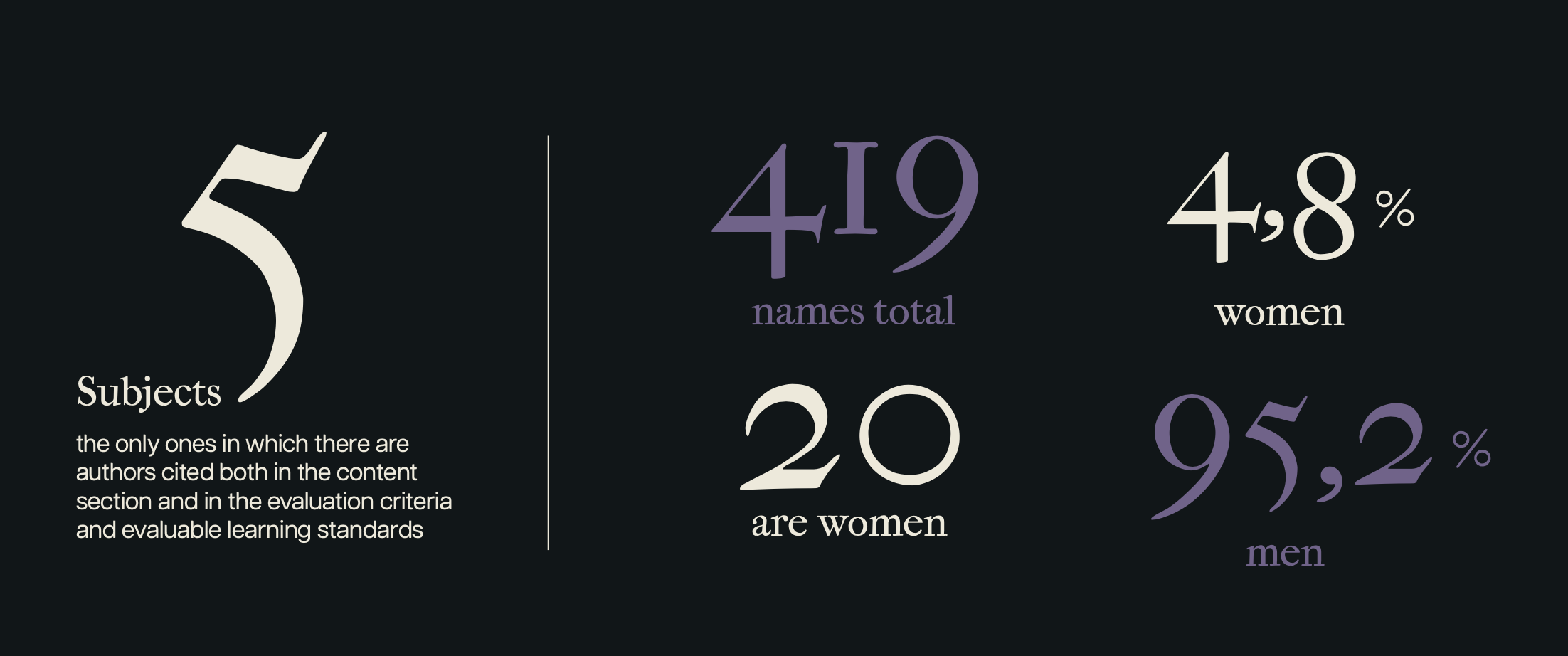Week VI
Midterm Break Research
After weeks of complete anxiety and doubt regarding the final project, the mid-term break has been good for me to rest and work on my freelance projects. This week, whose days have passed faster than I would prefer, I wanted to start investigating towards the final product.
Through mainly secondary research, I have sought to strengthen my knowledge on the topic and find data and questions that support my problem statement. Thus, my question with which this research period begins is the following: if the problem of the lack of female artists in the curriculum persists today, is gender perspective something new and recent, and therefore not reflected in books?
In the book The Restless Gaze by Eugenia Tenenbaum (Tenenbaum, E. 2022), she explains that the first time gender perspective was used in the history of art was in 1971, when historian Linda Nochlin published her book Why have there been no great women artists? (Nochlin, L. 1971). However, it was not until 1995 that the term was coined definitively and was officially accepted at the IV World Conference for Women in Beijing. Thus, first in practice and then in theory, this terminology and gender approach has existed for 50 years now. So it's not something new, and yet, how is it possible that it hasn't been reflected in high school textbooks yet?
Thus, this week has also served me to delve into the modus operandi of educational curricula and the theoretical framework of everything I am arguing. Referring to different theses in Spanish about the country's educational system regarding art history, as well as to the Spanish government's own website and Ministry of Education (Educagob, 2023), I have tried to analyze state legislation to verify that students are indeed not studying female artists.
To my great surprise, in 2020 the new government updated the educational legislation with the name LOMLOE, which included a new section on specific competencies. In point 8 of the Organic Law LOMLOE 3/2020 (Educagob,2023), it is specified what follows:
8. Integrate the gender perspective in the study of art history, analyzing the role that women have played and the image that has been given of them in different artistic styles and movements, to make female artists visible and promote effective equality between men and women.
On the one hand, I am happy that the government is trying to make changes and takes into account the importance of the gender approach. On the other hand, I was somewhat surprised because I thought I would have to refocus my entire project, but I didn't give up. With the help of various articles, I analyzed different topics of the subjects taught in the final year at the Spanish high schools.
Although it is true that it takes years for a new educational legislation to be fully implemented in classes -and there are also many aspects that depend on the autonomous regions- in practice, I have observed that gender perspective competencies have not been integrated into the history of art.
Analyzing the five subjects in which there are authors cited both in the content section and in the evaluation criteria and evaluable learning standards, we see that there are 419 names in total. Only 20 correspond to women, representing 4.8% (compared to 95.2% of men). In addition, they are concentrated on a single subject: Fundamentals of Art II. Neither in History of Philosophy, nor in History of Art, nor in Audiovisual Culture II, nor in History of Spain does a single woman appear. In these four subjects, the percentage is 0%.
It is obvious that the problem is more real than one might think, and once again I see emphasized the importance of a good educational program in shaping a person, especially at the threshold of their professional career. Although I have focused on the Spanish program due to my familiarity with it, I hope to explore the Irish curriculum in the coming weeks and compare both of them. Finally, next week I will propose names of women who are truly important, not just names to fill space, but ones that made great contributions to the arts, in preparation for Monday's mock presentation.
Currículo LOMLOE Segundo Curso Bachillerato (no date) Ministerio de Educación y Formación Profesional. Gobierno de España. Available at: https://educagob.educacionyfp.gob.es/gl/curriculo/curriculo-lomloe/menu-curriculos-basicos/bachillerato/materias/historia-arte/criterios-eval-segundo-curso.html (Accessed: February 24, 2023).
De Diego Otero, E. (2020) “A propósito de la calidad,” in Las mujeres y el universo de las artes / coord. por Concha Lomba Serrano, M. Carmen Morte García, Mónica Vázquez Astorga, pp. 15–28. Available at: https://ifc.dpz.es/recursos/publicaciones/38/38/02dediego.pdf.
Fajardo Galarreta, A. (2016) La inclusión de mujeres artistas y la perspectiva de género en el currículo de Historia del Arte de Bachillerato. Thesis.
Lomba Serrano, C., Morte García, C. and Vázquez Astorga, M. (2020) Las mujeres y el universo de las artes [Ebook]. INST.FERNANDO EL CATOLICO. Available at: https://ifc.dpz.es/recursos/publicaciones/38/38/_ebook.pdf.
Nochlin, L. (2020) “ARTnews.com,” ARTnews.com, 20 October. Available at: https://www.artnews.com/art-news/retrospective/why-have-there-been-no-great-women-artists-4201/.
Nochlin, L. and Grant, C. (2021) Why Have There Been No Great Women Artists? Thames & Hudson.
Tenenbaum, E. (2022) La mirada inquieta: cómo disfrutar del arte con tus propios ojos.
UN Women (no date) Gender Mainstreaming. Available at: https://www.unwomen.org/en/how-we-work/un-system-coordination/gender-mainstreaming (Accessed: March 25, 2023).
United Nations (1996) Informe de la Cuarta Conferencia Mundial sobre la Mujer: Beijing, 4 a 15 de septiembre de 1995. A/CONF.177/20/Rev.1. New York, United States of America. Available at: https://www.un.org/womenwatch/daw/beijing/pdf/Beijing%20full%20report%20S.pdf (Accessed: March 25, 2023).





Between The Brackets: Outcome
“There isn’t anything inherently different about work created by artists of any particular gender - it’s more that society and its gatekeepers have always prioritised one group in history” (K. Hessel, 2022)